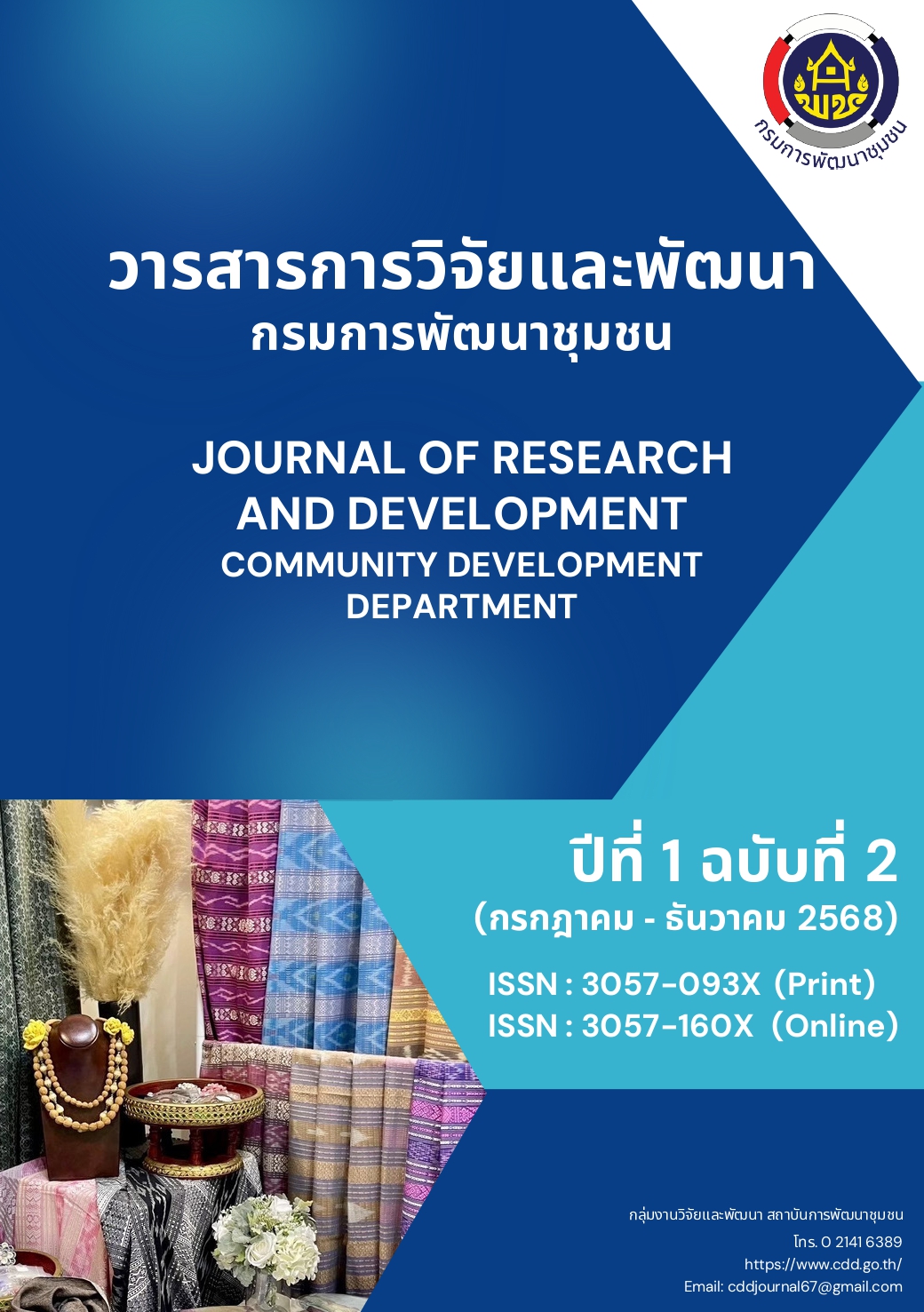Development of Indigenous Medicinal Plant Resource Diversity Database by Participatory Process in HUG NUM GANG Community, Mae Tha District, Lampang Province
Abstract
This research aims to study the diversity of indigenous medicinal plant resource and development of Indigenous medicinal plant resource diversity database by participatory process in HUG NUM GANG community, Mae Tha district, Lampang province. This is participatory action research, with a sample of 25 people, including farmers from Ban Na Kao, BanKiew subdistrict and personnel of the Lampang community development study center. Data were collected by semi structure interview, focus group discussion, and participant observation. Data were analyzed by using mean, standard deviation, and content analysis.
The result shows that;
1. There were 200 species of indigenous medicinal plant found in HUG NUM GANG community.
The varieties of species as follows: 67 herbaceous plants (33.5%), 45 shrubs (22.5%), 44 trees (22%),
29 climbers (14.5%), 13 underground bulbous plants (6.5%), 1 bamboo species (0.5%), and 1 fern species (0.5%). Each of these medicinal plants is utilized for various purposes, including medicine, food, utilities, and toxicity.
2. The indigenous medicinal plant in HUG NUM GANG community by learning, exploration, experimentation, and knowledge management have been developed to database. This database showcases information about the medicinal plant, as well as the knowledge of conservation and the utilization of local wisdom. It is designed to response to the use of planning alternatives and create development opportunities in all dimensions, based on sustainable local resources.
Keywords: Medicinal Plant, Participatory Process, Database
References
กระทรวงการอุดมศึกษา วิทยาศาสตร์ วิจัยและนวัตกรรม. (2562). ยุทธศาสตร์การขับเคลื่อนการพัฒนาประเทศไทย ด้วยโมเดลเศรษฐกิจ BCG พ.ศ. 2564-2569. สำนักงานพัฒนาวิทยาศาสตร์และ เทคโนโลยีแห่งชาติ
(สวทช.).
คณะทำงานจัดทำแผนแม่บท. (2564). แผนแม่บท อพ.สธ. ระยะ 5 ปีที่เจ็ด. กรุงเทพฯ: โครงการอนุรักษ์พันธุกรรมพืชอันเนื่องมาจากพระราชดำริ สมเด็จพระเทพรัตนราชสุดาฯ สยามบรมราชกุมารี.
ณรงค์ มหรรณพ. (2558). ความหลากหลายทางชีวภาพพืชสมุนไพรในประเทศไทย. สำนักวิจัยการอนุรักษ์ป่าไม้และพันธุ์พืช กรมอุทยานแห่งชาติ สัตว์ป่า และพันธุ์พืช.
ประชาคมวิจัยด้านเศรษฐกิจชีวภาพ เศรษฐกิจหมุนเวียนและเศรษฐกิจสีเขียว. (2561). BCG in Action การพัฒนาวิทยาศาสตร์ เทคโนโลยีและนวัตกรรมของประเทศไทย เพื่อเศรษฐกิจชีวภาพ เศรษฐกิจหมุนเวียนและ
เศรษฐกิจสีเขียว Bio - Circular - Green Economy. สำนักงานพัฒนาวิทยาศาสตร์และเทคโนโลยีแห่งชาติ (สวทช.).
พรชนก ทองลาด และคณะ. (2566). กระบวนการส่งเสริมเกษตรอินทรีย์สู่วิถีสังคมเอื้ออาทร โดยการมีส่วนร่วมของกลุ่มคนทุกช่วงวัย. มหาวิทยาลัยราชภัฏลำปาง.
มนัส สุวรรณ. (2549). การจัดการสิ่งแวดล้อม: หลักการและแนวคิด. โอเดียนสโตร์
วีระกิตติ์ เอกอัครวิจิตร และคณะ. (2566). รูปแบบการมีส่วนร่วมของประชาชนในการส่งเสริมให้เกิดชุมชนเข้มแข็ง. วารสารภักดีชุมพลปริทรรศน์. 1(1), 22-32.
สนธยา พลศรี. (2547). ทฤษฎีและหลักการพัฒนาชุมชน. โอเดียนสโตร์.
สุนทรี จีนธรรม และคณะ. (2558). การศึกษาความหลากหลายของพรรณพืชสมุนไพรและภูมิปัญญาท้องถิ่น โดยใช้กระบวนการมีส่วนร่วมของชุมชนบ้านดงบัง ตำบลดงขี้เหล็ก อำเภอเมือง จังหวัดปราจีนบุรี.
Interdisciplinary Research Review, 10(3), 1–8.
สำนักงานนโยบายและแผนทรัพยากรธรรมชาติและสิ่งแวดล้อม. (2566). รายงานสถานการณ์คุณภาพสิ่งแวดล้อม พ.ศ. 2566. https://www.onep.go.th/ebook/soe/soereport2023.pdf
อคิน รพีพัฒน์. (2527). การมีส่วนร่วมของชุมชนในสภาพสังคมและวัฒนธรรมไทยในการมีส่วนร่วมของประชาชนในการพัฒนา. ศักดิ์โสภาการพิมพ์.
Cohen, J.M., & Uphoff, N.T. (1981). Rural Development Participation: Concept and Measure for Project Design Implementation and Evaluation: Rural Development Committee
Center for international Studies. Cornell University Press.
Downloads
Published
Issue
Section
License
Copyright (c) 2025 Journal of Research and Development, Community Development Department

This work is licensed under a Creative Commons Attribution-NonCommercial-NoDerivatives 4.0 International License.






